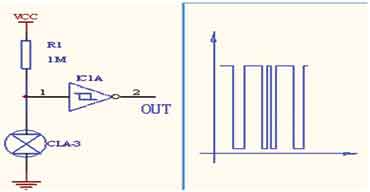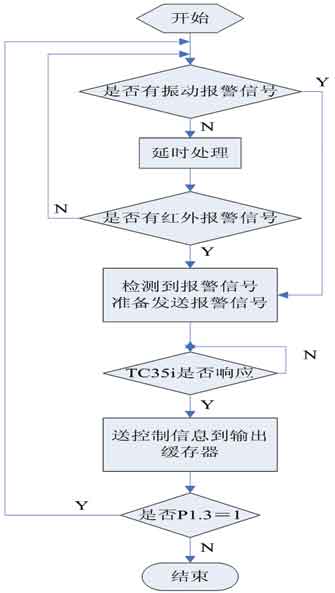With the increasing number of cars, the theft of cars has become a social problem that is generally concerned and urgently needed to be solved. At present, various car anti-theft methods and products are emerging one after another, but the car anti-theft problem is still not completely solved. Traditional alarm systems have many problems, such as short acting distance, noise pollution caused by alarms, and false alarms. The GSM car alarm device designed by this system is based on the GSM network with high coverage rate, and utilizes GSM wireless communication service and short message value-added service. It has the characteristics of simple implementation, low communication cost, high spectrum utilization and good confidentiality. It not only realizes communication alarms in real time, automatically, reliably and conveniently, but also breaks through the limitation of distance, and has the characteristics of high technical content, intelligence and network.
This article refers to the address: http://
The overall design of the system is mainly composed of the detection module, the processor, the GSM communication module and the owner's mobile phone. The overall structure of the system is shown in Figure 1. The detection module includes a pyroelectric infrared sensor and a vibration sensor. After detecting the signal, the detection module transmits the alarm message to the owner's mobile phone or the designated number mobile phone through the software processing system and the GSM network, thereby realizing the long-distance transmission of the alarm signal.

Figure 1 System overall structure block diagram
System hardware design
1 GSM communication module
GSM module TC35i is an industrial grade GSM module supporting Chinese short message. It works in GSM900 and GSM1800 dual-band, can transmit voice and data signals, and connects SIM card reader and antenna through interface connector and antenna connector respectively. Its data interface (CMOS level) can transmit instructions and data in both directions through AT commands. It supports SMS in Text and PDU formats. Restart and failback can be achieved with AT commands or shutdown signals.
2 Pyroelectric infrared alarm circuit Pyroelectric infrared sensor is a new type of high-sensitivity detection component developed in the 1980s. It detects the change in the infrared energy radiated by the human body in a non-contact manner and converts it into a voltage signal output. By amplifying this voltage signal, various control circuits can be driven, such as power switch control, anti-theft fire alarm, automatic detection, and the like. The pyroelectric infrared sensor is sensitive only to infrared radiation having a center wavelength of 9 to 10 μm, and can detect infrared information of human body radiation, and can be used as a monitoring device for human body invading the vehicle. Pyroelectric infrared sensors output electrical signals by detecting infrared rays emitted by humans or animals at an angle of 110°. The BISS001 infrared finished component can be used, and the working distance is adjusted by the Fresnel lens. The application circuit is shown in Figure 2.

Figure 2 Pyroelectric infrared alarm circuit
In Figure 2, BISS0001 is a sensor signal processing integrated circuit with high performance. It is equipped with a pyroelectric infrared sensor and a small number of external components to form a passive pyroelectric infrared alarm. The digital-analog mixing consists of an operational amplifier, a voltage comparator, a state controller, a delay time timer, and a lockout timer. ASIC.
3 Vibration sensor The vibration sensor can monitor the vibration of the special frequency band of the vehicle body, and can generate an alarm when the vehicle body is damaged by an external force. The vibration sensor can use the ND-1 type highly sensitive vibration displacement sensor. It is an all-round solid-state control device that combines vibration and displacement measurement. It miniaturizes the mechanical vibration sensor, carbonizes the vibrating body and seals it. It has high detection sensitivity to vibration and sound signal to the surrounding environment. It is suppressed and has strong anti-interference ability, and its sensitivity is adjustable by capacitance. Its performance is more reliable. The output switch signal is directly connected to the TTL circuit or to the input circuit of the single chip microcomputer. The circuit structure is simple, the output impedance is high, and the static working current is small.

Figure 3 vibration alarm circuit diagram and its output waveform
Fig. 3 is a vibration detecting circuit composed of a MOST non-gate circuit, and the output waveform is a shock pulse signal of the same amplitude. The signal is sent to the single chip microcomputer, and the authenticity of the vibration signal is detected by the single chip software, and the type of the vibration is judged by the pulse width and the number of pulses. If the port programmable microcontroller is used and the port is programmed to the input state, the vibration signal can be directly detected and the shaping amplifier circuit can be omitted.
System software design
1 ATM-related AT commands
The command interface provided by the GSM module complies with the GSM07.05 and GSM07.07 specifications. The AT Command interface defined in GSM07.07 provides a common interface between the mobile platform and the data terminal equipment. GSM07.05 specifies the short message. When the short message module receives the short message sent by the network, it can send an indication message through the serial port, and the data terminal device can send various commands to the GSM module.
Currently, text and PDU (Protocol Data Unit) modes are commonly used to send short messages. Using Text mode to send and receive SMS code is simple and easy to implement, but the biggest drawback is that it can't send and receive Chinese text messages, and PDU mode not only supports Chinese text messages, but also can send English text messages. The PDU mode can send and receive text messages using three types of codes: 7-bit, 8-bit, and UCS2. The 7-bit code is used to send normal ASCII characters, the 8-bit code is usually used to send data messages, and the UCS2 code is used to send Unicode characters. The encoding type is specified in the PDU packet.

Figure 4 system flow chart
2 System flow system flow chart shown in Figure 4. The main program includes system initialization and loop detection. The delay subroutine is used to generate a certain delay, and then the alarm is activated to prevent false alarms: the main program is used to control the alarm circuit and the short message transmission circuit. When the MCU receives the interrupt alarm signal, the SMS sending circuit sends an alarm message to the owner in time. If everything is ok, the program is in a loop waiting.
The conclusion is verified that the car anti-theft system based on GSM short message data transmission technology can not only improve the communication reliability of the alarm, but also the communication distance is basically unlimited, thereby realizing the long-distance monitoring of the car by the user. It is convenient for the owner to take measures according to the situation and meet the requirements of the owner for the car anti-theft. The system is simple to install, powerful, easy to apply, and easy to promote.
Sfx Power Supply,Sfx 250W Power Supply,Sfx Pc 150W Power Supply,Psu 150W 200W Power Supply
Boluo Xurong Electronics Co., Ltd. , https://www.greenleaf-pc.com